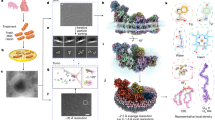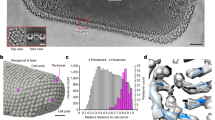Abstract
Thibaud and Dupré La Tour1 discovered the polymorphism of the fatty acids and observed that only in the case of myristic acid did the γ-form appear, and that infrequently after recrystallization of this acid at 0° C. This form was characterized by a ‘long spacing’ of 37 A., and could be converted to the more common α-form by heating to within a few degrees of its melting point.
This is a preview of subscription content, access via your institution
Access options
Subscribe to this journal
Receive 51 print issues and online access
$199.00 per year
only $3.90 per issue
Buy this article
- Purchase on Springer Link
- Instant access to full article PDF
Prices may be subject to local taxes which are calculated during checkout
Similar content being viewed by others
References
Thibaud, J., and Dupré La Tour, F., C.R. Acad. Sci., Paris, 190, 945 (1930).
Vand, V., Acta Cryst., 1, 109 (1948).
Vand, V., Lomer, T. R., and Lang, A. R., Acta Cryst., 2, 214 (1949).
Vand, V., Morley, W. M., and Lomer, T. R., Acta Cryst., 4, 324 (1951).
Author information
Authors and Affiliations
Rights and permissions
About this article
Cite this article
LOMER, T. Unit-Cell Dimensions of γ-Lauric and γ-Myristic Acids. Nature 176, 653–654 (1955). https://doi.org/10.1038/176653b0
Issue Date:
DOI: https://doi.org/10.1038/176653b0
This article is cited by
-
Case of Charge-Assisted Hydrogen Bonding in the Crystal Structure of Sodium Laurate, Lauric Acid
Journal of Chemical Crystallography (2023)
-
A new polymorphic form of elaidic acid
Journal of the American Oil Chemists' Society (1967)
Comments
By submitting a comment you agree to abide by our Terms and Community Guidelines. If you find something abusive or that does not comply with our terms or guidelines please flag it as inappropriate.



